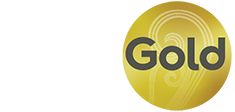Your Resources
Starting Out in Business? Don’t Miss Out on the Tax Discount!
Are you beginning to earn income from your business or from a partnership? The government has introduced new laws which mean you’ll get a tax discount when you make voluntary income tax payments before you have to start paying provisional tax.Why a tax discount?
Paying your income tax “as you go” is easier on your pocket than paying it all at the end of the year.
That’s why we pay provisional tax.
But because you don’t need to start paying provisional tax until your end-of-year tax exceeds $2,500 you may not have to pay for the first year or so you are in business (however you still need to pay income tax on the income you receive in your first year of business).
The new discount is to help you get a “head start” on your tax payments by making voluntary payments during a year when you don’t have to pay provisional tax.
If you don’t make any voluntary payments, you could find yourself in financial difficulty once you start paying provisional tax. You’ll have two years’ worth of tax – your current year’s provisional tax and your previous year’s end-of-year income tax – to pay at around the same time.
How can you get a discount?
You can get a discount if:
- You earn self-employed income, or income from a partnership (you don’t qualify if you use a company or trust for your business).
- Your main source of income comes from a business – it exceeds any investment, rental, beneficiary income or income from royalties.
- You make voluntary income tax payments before the end of the tax year in which you intend to claim the discount (in most cases this is 31 March).
- You don’t have to pay provisional tax.
- You didn’t have to pay provisional tax in the previous four years.
Note: You need to make the voluntary payments before the end of the same tax year in which you claim the discount. You also need to keep whatever is smaller – the amount of voluntary payments you’ve made or the amount of end-of-year tax – in your income tax account until the end-of-year tax date (7 February or 7 April if you have a tax agent).
How do you calculate the discount?
The discount is 6.7% of the smaller of your total voluntary tax payments for the year, and 105% of your end-of-year tax.
Example of a discount calculation
Maria has just started working as a self-employed taxi driver. During the year she makes voluntary payments totalling $5,000. The amount of end-of-year tax she has to pay is $8,000.
In Maria’s case, the discount is 6.7% of the smaller of:
- $5,000, and
- $8,400 (105% of $8,000).
so she is entitled to a discount of $335 (6.7% of $5,000).
Can you choose when to claim the discount?
You can choose to receive the early payment discount either in your first year of business or a following income year. However, you must claim it before the first year you are required to make provisional tax payments. You’ll get the biggest benefit by claiming it in the year with the highest end-of-year income tax.
Example of maximising the discount
Paul earns income from a partnership. His business results for the first four years are shown in the table below. Note that Paul becomes a provisional taxpayer in Year 3 (his end-of-year income tax exceeds $2,500) but he doesn’t have to start paying provisional tax until Year 4.
Year 1
Year 2
Year 3
Year 4
Income
$3,000
$12,000
$25,000
$30,000
End of year income tax owing
$450
$1,950
$4,680
$5,730
Becomes a provisional taxpayer?
No
No
Yes
Yes
Liable to pay provisional tax?
No
No
No
Yes
Entitled to Discount?
Yes
Yes
Yes
No
Paul can claim the discount in any of the first three years because at that stage he isn’t paying provisional tax. He would maximise the discount by claiming it in Year 3.
Can you claim more than one discount?
In general, a discount is a “one-off” claim. However, if you stop earning partnership and self-employed income for a period of four years, you can claim a further discount if you start up again.
How do you make a claim?
The individual income tax return (IR 3) has a tick box so you can indicate that you want to claim the discount in that year. The return guide will contain more information about the eligibility criteria.
Do you need more information?
If you have any questions about discounts, please phone the IRD on (toll-free) on 0800 377 774.







 Top
Top